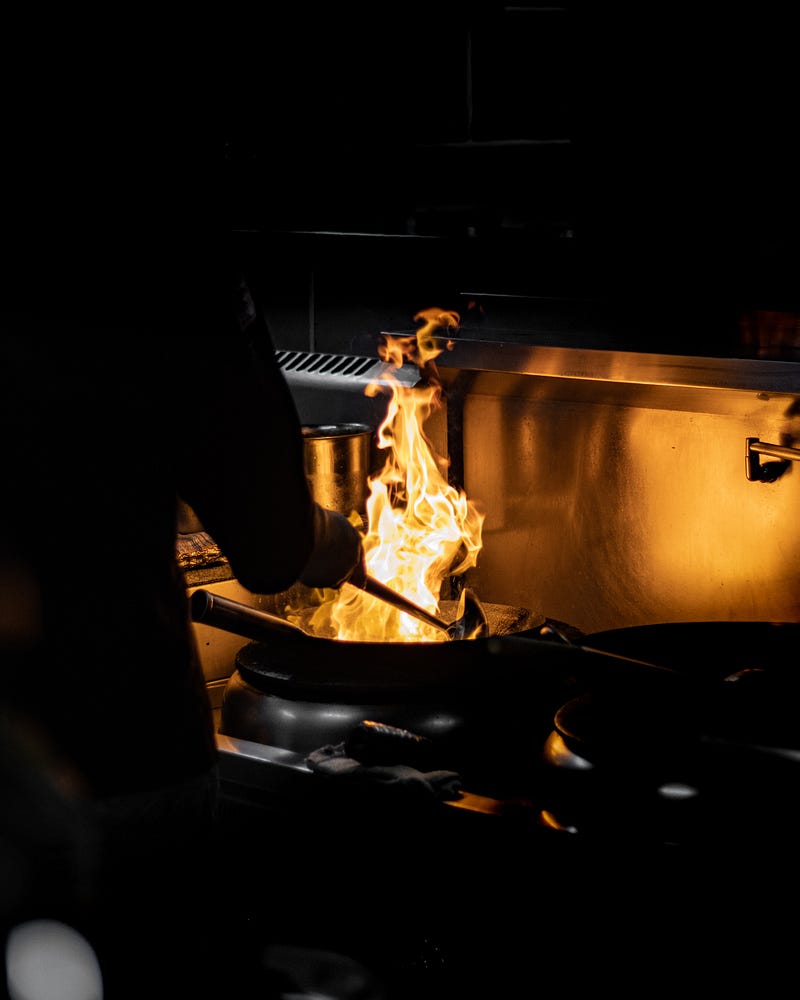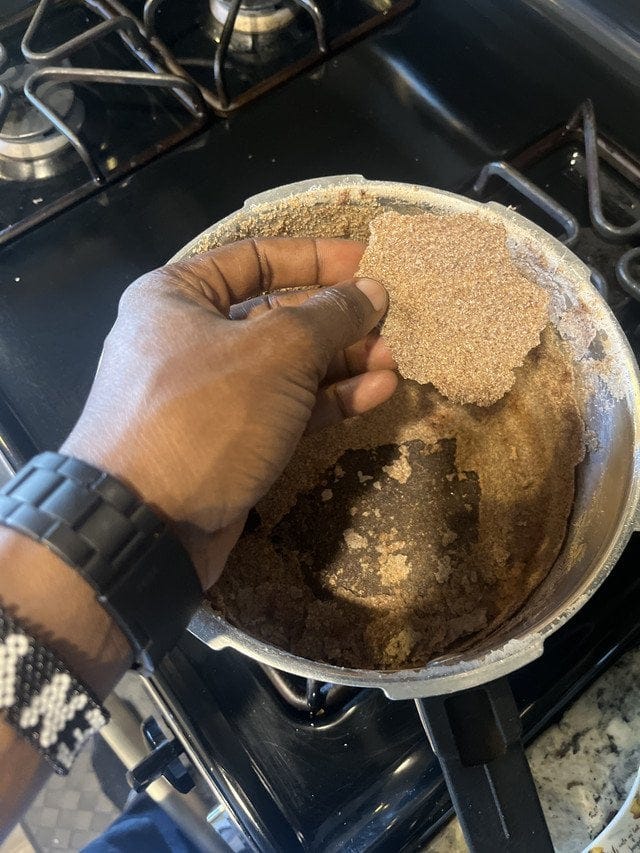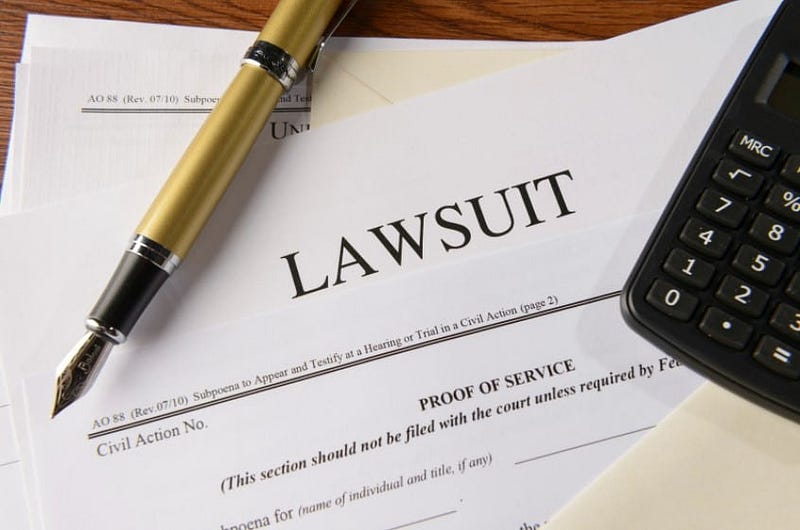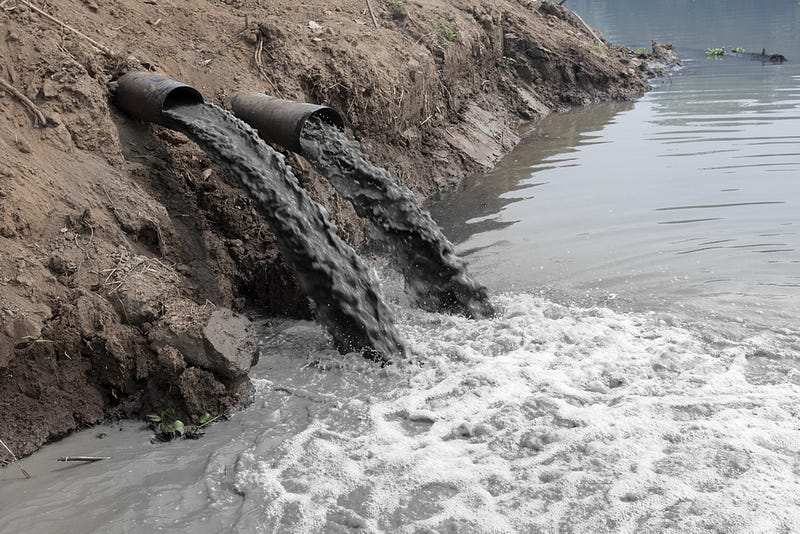
Ugali is a popular staple dish in Kenya. It is made from maize flour which is cooked in boiling water until it becomes a firm dough-like consistency. It is a relatively inexpensive meal that is widely available and easy to make. It is a side dish that accompanies cooked vegetables or meat cooked in gravy.
Growing up my favorite dish was wet fry tilapia with gravy, collard greens, and ugali. It was a meal that my family made when visitors graced our home or holidays. It was also pretty popular during major ceremonies like weddings and family get-togethers.

During such large events, ugali was prepared using large iron saucer pans. They retain heat much better than clay pots, making them ideal for preparing a large amount of ugali quickly.
A fond memory from my childhood is when my grandmother would call all of us grandkids to the kitchen after making ugali. We would scrape over the leftover crust from preparing baked onto the bottom and sides of the pot. That slightly charred, toasted flavor was utter bliss, leaving us craving for the actual meal to come.

For regular family meals, my mother made ugali in a steel pot. The crust-like residue would stubbornly stick to the bottom and the sides of the pot. If not soaked in water, it would be a pain to wash off. As the one tasked with washing dishes every morning, I had to be diligent about soaking the pot right away if ugali had been on the menu.
There are multiple occasions when I would fall into bed with a nagging sense that I was forgetting something important. It is that type of feeling where your subconscious knows so and it is certain, but you can’t quite pull whatever that thing is into the conscious realm.

Whenever I ignored the hunch, I would wake up the next day just to discover that I hadn’t soaked the damn pot. It would be an arduous process of chiseling off the crust.
You probably have similar experiences making foods that are notorious for cementing themselves onto your cookware. Cleaning the stubborn residues is a drag no one enjoys, and is a situation we’d all choose to sidestep rather than face again.
Nonstick Pans
Nonstick pans are a type of cookware that has a special coating designed to prevent food from sticking to the surface. This coating is typically made of materials like Teflon (PTFE), ceramic, or silicone.

Nonstick pans are popular for various reasons:
- Food doesn’t stick to the pan’s surface, making meal preparation convenient. It is easier to cook and flip foods like eggs, or pancakes without them sticking and breaking apart.
- Minimal effort is employed in cleaning as there’s less residue from making meals.
- The non-stick surface allows you to cook with little to no added oils or fats, making it a healthier cooking option.
- A non-stick surface works best for cooking methods like sautéing, frying, and searing where you want the food to not stick to the pan.
Industry analysts predict the worldwide demand for nonstick cookware will reach 280.43 million units by 2028, with Teflon-coated pans accounting for most of these sales.
The History of Teflon
Teflon was accidentally discovered by Dr. Roy J. Plunkett in 1938, a Chemist at the chemical manufacturing corporation DuPont. He was doing research on chlorofluorocarbon refrigerants at their laboratory when he stumbled upon a strange substance.

He found a new slippery resin in a discarded gas cylinder that was extremely heat resistant. This resin was polytetrafluoroethylene, which would be commercially referred to as Teflon.
DuPont patented Teflon in 1941 and began experimenting with potential uses for the material. During World War II, Teflon was used to coat valves and seals in the Manhattan Project to make the production of the atomic bomb more feasible (Dr. Robert Oppenheimer was part of this project, testing the feasibility of the atomic bomb in Los Alamos, New Mexico).

It was also used as an insulating material for electrical wire and cable coverings, helping them withstand high temperatures and abrasion.
In 1954, the initial PTFE-coated nonstick cooking pan was created by French engineer Marc Grégoire, prompted by his wife’s suggestion. The realized potential and the kitchen convenience it provided generated demand, opening up opportunities for chemical manufacturers.

Apart from nonstick cookware, Teflon has other industrial applications. It is used in making windshield wipers, as glass coatings for lightbulbs, additive in weather-resistant paints, and as a graft material for surgeries.
David vs Goliath
Jim Tennant had been afflicted with undiagnosed medical conditions that increasingly affected his well-being over the years. His wages from working as a laborer at Washington Works, a factory owned by DuPont, were insufficient, and he required funds for treatment.

In a desperate bid to raise funds for treatment, he decided to sell 66 of the 600 acres of farmland he shared with his four siblings to his employer. DuPont would use the plot as a landfill for waste for its Washington Works Factory.
A creek that ran through the plot fed into the pasture where the Tennants grazed their cows. A while after the sale, and after DuPont started its operations on the plot of land, the Tennants noticed strange behavior in their cattle.
Their cows were going down with strange ailments, and some even died due to deteriorating health. The organs of some of the dead cows had unusual discolorations, something that they had not seen before.
The Tennants took photographs and videotaped the occurrences they witnessed on their farm, and they decided to seek legal counsel.

Wilbur Tennant believed that DuPont was responsible for the problems that had brewed on their farm. He tried seeking help locally but was unsuccessful. With DuPont’s expansive operations accounting for much of the area’s jobs and economy, the Tennants faced a wall of refusal from those they sought help from, including legal, political, media, and veterinary professionals.
Though armed with material to back their claims, they found no one willing to take on such a huge corporate giant. They weren’t going to give up, however.
Unlikely Ally Steps In
As a child, Rob Bilott often visited his grandmother during the summer. On one occasion, she took him to a family friend’s farm that was adjacent to the Tennants’ farm.
From horseback riding to cow milking to playing in vast fields, spending time at the farm created fond memories that nurtured a warm connection within him to the area.

It was perhaps part of the reason why he decided to represent Wilbur Tennant. This was a strange decision considering his occupation as an environmental lawyer specializing in protecting large corporate entities and Chemical corporations. He had even worked with DuPont’s lawyers in the past.
However, after reviewing the tapes, photos, and numerous documents that Wilbur Tennant had brought to him, he decided to take up the case. He knew it would be an uphill battle considering DuPont’s massive power and influence, and despite his colleagues asking him to reconsider his decision, he remained steadfast in his decision to see it through.
It just felt like the right thing to do
The Showdown
In the summer of 1999, Bilott filed a federal lawsuit against DuPont on the toxic waste mishandling in the plot of land leading to the death of cattle. DuPont, in response, commissioned a study on the Tennants’ farm along with the United States Environmental Protection Agency to investigate the claims of the suit.

In their report, they claimed that the cattle’s deaths were a result of poor animal husbandry: poor nutrition, inadequate veterinary care, and lack of fly control.
At this point, the lawsuit seemed destined to fail. It wasn’t until Bilott was granted access to DuPont’s internal documents on the chemicals used in their industrial processes and lab experiments that he found everything he needed — and much more.
The Smoking Gun
As the patent owner of Teflon, DuPont envisioned the material’s profit potential. The corporation sought new applications beyond nonstick cookware to expand its market dominance. They were manufacturing Teflon on a large scale and were reaping huge profits.

To ensure a smooth production process, they needed another chemical, Perfluorooctanoic Acid (PFOA) or C8. PFOA was used at the time to prevent Teflon from clumping during production. Without it, commercial-scale production of Teflon would have been difficult.
PFOA is a toxic substance that needs to be properly disposed of. Instead of following the right disposal protocols, DuPont dumped it into the Ohio River, contaminating the community’s water supply.

DuPont was implicated by their documents which accepted PFOA’s toxic potential. Bilott had all he needed, and he settled the case for the Tennants. This should have marked the end of the battle, but Bilott wasn’t done cooking.
DuPont’s Willful Negligence
DuPont had been doing scientific research and studies on the hazardous nature of PFOA. These studies pointed to birth defects in rats, a disturbing finding reflected in the children of some of their pregnant employees. Links to testicular, pancreatic, and liver cancers were also uncovered.

They had withheld this information from the public, likely fearing the costs and potential compromise of Teflon production should they switch to safer alternatives. Armed with proof of DuPont’s conscious neglect, Bilott was resolved to fully expose their misdeeds to the public.
Bilott filed a class action lawsuit against DuPont on behalf of 70,000 people in West Virginia. This was soon followed by a flood of personal injury lawsuits after an independent study of area residents confirmed links between PFOA exposure and the serious illnesses uncovered in the documents.
The legal onslaught was immense — DuPont ultimately spent over $1 billion coping with the fallout, including settlement costs. The exposure of their reckless disregard for human safety tainted their reputation for years thereafter.
The movie Dark Waters does an incredible breakdown of this saga. I highly recommend it.

In recognition of his pivotal efforts exposing DuPont’s misconduct and raising awareness about poly- and perfluoroalkyl substances (PFAS) contamination, Bilott received the prestigious Right Livelihood Award in 2017, known as the Alternative Nobel Prize.

Teflon Today
Rife with cover-ups, dishonesty, and valuing earnings over ethics, health, and environmental harm, Teflon’s past is fraught with darkness. Though since 2013, most companies have transitioned away from using toxic PFOA in manufacturing Teflon.
In the context of Teflon pans, they are not a significant source of PFOA today. However, when overheated (above 500°F /260°C), Teflon begins to break down, and studies suggest potential exposure to various health problems:
- Polymer fume fever from broken down Teflon that manifests with symptoms such as fever, shivering, sore throat, and weakness
- Tetrafluoroethylene (TFE), one of the byproducts of Teflon has been linked to increased risks of liver cancer
- Lung damage to prolonged exposure to overheated Teflon
- PTFE along with other PFASs are endocrine disruptors. , interfering with normal hormone function
While most chemical companies stopped using PFOA to manufacture Teflon there are still significant concerns over the effects of the new alternatives of PFASs as they haven’t been thoroughly studied.

They are present everywhere, in our food, water bottles, body lotions, soap, deodorants, fertilizers, scented candles, water supply, and even in the air we breathe. These substances are dubbed forever chemicals as they take an eternity to break down.
The prevalence of these chemical substances and their impacts on biological organisms and the environment is an entire topic that warrants its exploration.
Teflon Pan Alternatives
As public awareness of the dangers of Teflon increased over the years, people started seeking new alternatives that were safer but could still provide the same convenience that Teflon pans offered.
Some of these alternatives include:
- Stainless Steel: Durable and scratch-resistant. It’s not naturally nonstick, food can adhere to the surface if cooking at high heat, so care must be taken.
- Ceramic Cookware: Made from inorganic clay or sand, and can also withstand high cooking temperatures. Some companies manufacture cookware with ceramic coating, though this coating is not really “ceramic”.
- Cast Iron: Naturally non-stick when seasoned properly.
- Carbon steel: Seasoned like cast iron to create a non-stick patina.
If you opt to stick with Teflon cookware, there are guidelines that you can follow to protect yourself from potential toxicity.
Some of these measures include cooking with low heat, properly ventilating your kitchen, and going for Teflon pans manufactured after 2013 as they are PFOA-free.
If you opt to stick with Teflon cookware, there are guidelines that you can follow to protect yourself from potential toxicity.
Some of these measures include cooking with low heat, properly ventilating your kitchen, and going for Teflon pans manufactured after 2013 as they are PFOA-free.

I shifted to stainless steel which I majorly use today. While it has numerous benefits, it is not nonstick, and I am back to soaking my steel pot whenever I prepare ugali or any sticky meal for that matter.
I also have to pay attention to the amount of heat I am using. If I am caught lacking, whatever I am preparing might stick or burn, sabotaging my planned meal.
Closing Thoughts
Should you bin your Teflon cookware?
Nope, you don’t have to, and you don’t have to live life paranoid of every potential danger that could compromise your health. While it’s true we encounter more dangerous compounds today than ever before, it’s truly remarkable how resilient our bodies are against the plethora of chemicals we get exposed to daily.
That being said, you aren’t indestructible, and it would be dumb to deliberately put yourself in the line of danger to test your limits.
I think what is most important is enlightening ourselves as much as we can, and using that knowledge to do what’s best and what works for us.
A great write